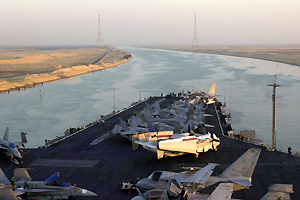The Islamic Republic of Iran is located in Asia, between the Caspian Sea in the north and the Persian Gulf and the Gulf of Oman in the south. It is bordered by Armenia, Azerbaijan and Turkmenistan in the north; Afghanistan and Pakistan in the east and Iraq and Turkey in the west.
68.7 million people live in its area of 1,648,000km2, and it has a population density of only 40 inhabitants per square kilometre. Half the population is Persian, but there are also Azerdis, Gilaki, Mazandarani, Kurds, Arabs, Lurs, Baluchi and Turks among others.
Its capital is Teheran and the main cities are Mashad, Isfahan, Tabriz and Shiraz.
The official language is Persian, also known as Farsi, its currency is the Iranian Rial and the main religion is Muslim (95.6%).
Iran is a theocratic republic, as the State’s powers depend on the authority of the supreme religious leader, who has been the Ayatollah Ali Khamenei since 1989.
The President, currently Mahmoud Ahmadinejad, and the National Assembly or Majles of 270 members, are elected every four years.
Physical Characteristics
This country is formed by an extensive dry central plain which has an average altitude of 1200 metres. The Hindu Kush and Alborz mountain ranges and the Armenian Mountains lie to the north of the plain, and the Zagros Mountains lie to the east.
A desert or semi-arid climate prevails, except in the coastal plains near the sea. The main rivers are the Karun, which is the only navigable river, and the Atrek and the Safid.
Forests cover only 11% of the land area and are mainly located near the Caspian Sea. In the remainder of the territory, except on riverbanks, the scarce vegetation is xerophytic (adapted to dryness).
Economy
Its main resource is petroleum which is State owned. Besides this it has significant reserves of natural gas. More than half of its industries are in Tehran, which is also the trading centre for the famous Persian carpets.
Industries based around steel, food products, textiles, electronic machinery and tiles are prominent.
This year detergents and medicines have grown significantly in Iran’s exports. Iranian caviar is also known around the world.
Agriculture is underdeveloped, as arable land accounts for only 10% of the land area, however it employs most of the working-age population.
Wheat, barley, cotton and fruit trees are grown in the oases of Tehran, Isfahan and Shiraz. Ovine and caprine livestock, as well as extensive cultivation of cereals, are the only ways in which the central eastern part of the country is economically utilised.
Due to its rivalry with the United States, part of its reserves and trade are in Euros, the currency of the European Community.
A Brief History
The Elamites, based in South-eastern Iran, and their neighbours in Mesopotamia were rivals in the third millennium B.C.
The Indo-Europeans or Aryans, originating from Central Asia, entered the Iranian Plain during the second millennium B.C.
The Medes established their domination in the region in the mid 7th Century B.C. The Persian King Cyrus II conquered the Medes in around 550 B.C. and created a great empire which lasted two centuries, until it was conquered by Alexander the Great in 330 B.C.
After Alexander’s death Seleucus founded the Seleucid dynasty in 312 B.C. Later, the area was governed by the Parthian Arsacid dynasty between 250 B.C. and 224 A.D.
The Persians returned to power with the Sassanids in 224. Their empire extended from India to Arabia.
The Arabs dominated from 661 until the 10th Century, when the Seljuk Turks destroyed the caliphat of Baghdad.
The region was devastated by the Mongols in the 13th and 14th Centuries, but prosperity returned with the Shiite Safavid dynasty (1502-1736).
Iran lost the Caucasus to Russia in the 19th Century after the war of 1813. The Shah, Reza Khan Pahlavi began a series of economic, administrative and cultural reforms in 1925. The Soviets and British occupied part of the country due to its affinity with Germany in 1941. The Shah abdicated in favour of his son Mohammed Reza Pahlavi, who established a constitutional monarchy and nationalised petroleum.
After the opposition religious leader, the Ayatollah Khomeini, returned from exile, the Islamic Republic was established and proclaimed on the 1st of April 1979. The new Constitution converted Khomeini into the life-long supreme political and religious leader.
The country was at war with Iraq from 1980 to 1989.
Following Khomeini’s death in 1989, Ali Khamenei became the new religious leader.







